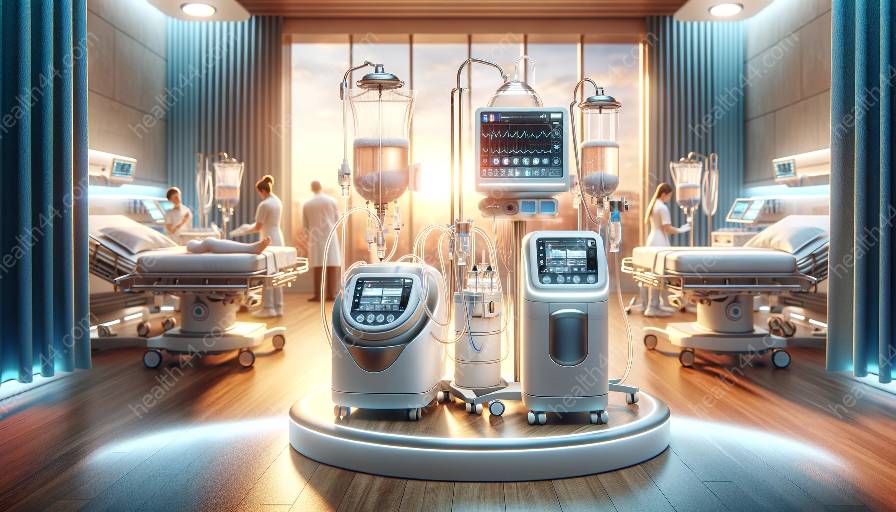Wound care is a crucial aspect of medical treatment, and advancements in medical devices & equipment have led to the development of vacuum-assisted closure (VAC) systems. These systems play a significant role in promoting healing and managing complex wounds. In this comprehensive guide, we will explore the principles, benefits, and applications of VAC systems in wound care, highlighting their compatibility with wound care devices and other medical equipment.
Understanding Vacuum-Assisted Closure Systems
Vacuum-assisted closure systems, also known as negative pressure wound therapy (NPWT) systems, are innovative medical devices designed to facilitate the healing of wounds. These systems consist of a vacuum pump, a drainage tube, and a sealing membrane that covers the wound. By applying controlled negative pressure to the wound site, VAC systems promote wound healing through several mechanisms, including:
- Increased Blood Flow: The negative pressure helps promote blood circulation, which is essential for delivering oxygen and nutrients to the wound.
- Reduced Edema and Swelling: VAC systems help remove excess fluid from the wound, reducing swelling and promoting a healthier wound environment.
- Enhanced Tissue Granulation: The controlled negative pressure stimulates the formation of granulation tissue, which is crucial for the healing process.
- Bacterial Control: By effectively removing wound exudate and controlling bacterial growth, VAC systems minimize the risk of infection.
Benefits of Vacuum-Assisted Closure Systems
VAC systems offer a range of benefits that make them a valuable tool in wound care management. Some of the key advantages of using VAC systems include:
- Promotion of Faster Healing: The controlled negative pressure and enhanced tissue perfusion provided by VAC systems accelerate the wound healing process.
- Management of Exudate: By effectively removing excess wound fluid, VAC systems help maintain a moist wound environment optimal for healing.
- Reduction of Edema and Swelling: Patients experience reduced swelling and improved comfort, contributing to overall wound management.
- Minimized Risk of Infection: The bacterial control provided by VAC systems helps prevent wound complications and infections.
- Improved Patient Comfort and Mobility: VAC systems can be applied in a manner that allows patients to continue with their daily activities while receiving ongoing wound care.
- Management of Complex Wounds: VAC systems are particularly effective in treating challenging and complex wounds, including chronic ulcers, traumatic injuries, and surgical wounds.
Applications in Wound Care Devices and Medical Equipment
The compatibility of VAC systems with wound care devices and other medical equipment further enhances their effectiveness in wound management. VAC systems can be seamlessly integrated with various wound care devices, such as dressings with specialized materials for wound bed preparation, drainage systems, and wound measurement tools. Additionally, VAC systems complement the broader spectrum of medical devices & equipment used in wound care, including surgical instruments, debridement tools, and diagnostic imaging technology, thereby facilitating comprehensive care for patients with complex wounds.
Advancements in Vacuum-Assisted Closure Systems
Advances in medical technology continue to drive improvements in VAC systems, leading to enhanced functionality and usability. These advancements include:
- Smart Monitoring and Control: Modern VAC systems are equipped with advanced monitoring features that allow healthcare providers to track wound healing progress and adjust negative pressure levels as needed.
- Customizable Wound Therapy: VAC systems now offer more customization options to accommodate specific wound characteristics, such as size, shape, and location.
- Integrated Connectivity: Some VAC systems are designed to integrate with electronic health records and telemedicine platforms, enabling seamless data sharing and remote monitoring.
- Enhanced Patient Mobility: Newer VAC systems are designed with ergonomic considerations to optimize patient comfort and mobility, allowing for a more active recovery process.
Conclusion
Vacuum-assisted closure systems have revolutionized the field of wound care, offering a comprehensive solution for promoting healing and managing complex wounds. Their compatibility with wound care devices and broader medical equipment enhances their versatility and effectiveness in addressing a wide range of patient needs. As technology continues to evolve, VAC systems are expected to further advance, contributing to improved outcomes and enhanced patient care in the realm of wound management and medical devices & equipment.


